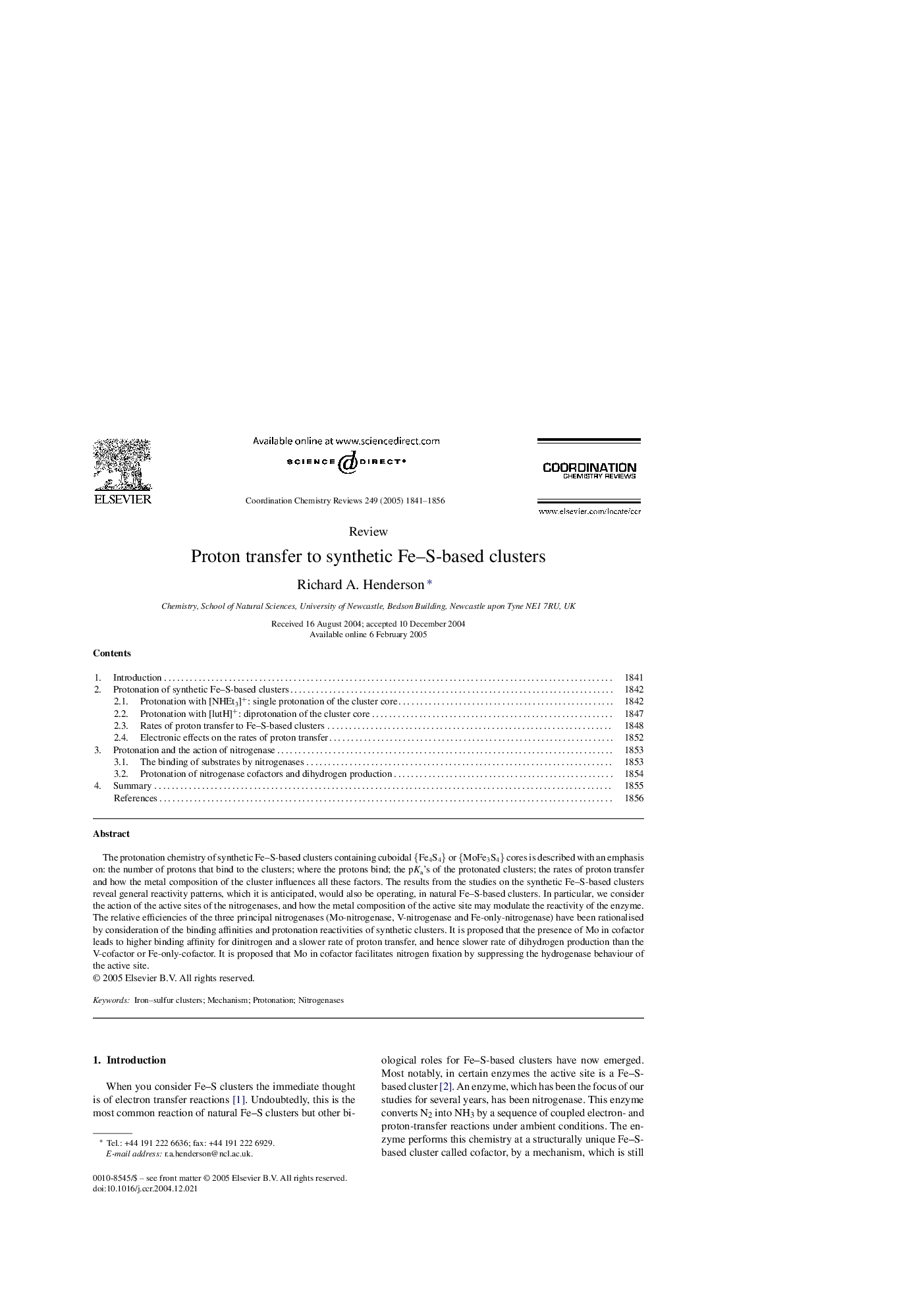| Article ID | Journal | Published Year | Pages | File Type |
|---|---|---|---|---|
| 1300815 | Coordination Chemistry Reviews | 2005 | 16 Pages |
The protonation chemistry of synthetic Fe–S-based clusters containing cuboidal {Fe4S4} or {MoFe3S4} cores is described with an emphasis on: the number of protons that bind to the clusters; where the protons bind; the pKa's of the protonated clusters; the rates of proton transfer and how the metal composition of the cluster influences all these factors. The results from the studies on the synthetic Fe–S-based clusters reveal general reactivity patterns, which it is anticipated, would also be operating, in natural Fe–S-based clusters. In particular, we consider the action of the active sites of the nitrogenases, and how the metal composition of the active site may modulate the reactivity of the enzyme. The relative efficiencies of the three principal nitrogenases (Mo-nitrogenase, V-nitrogenase and Fe-only-nitrogenase) have been rationalised by consideration of the binding affinities and protonation reactivities of synthetic clusters. It is proposed that the presence of Mo in cofactor leads to higher binding affinity for dinitrogen and a slower rate of proton transfer, and hence slower rate of dihydrogen production than the V-cofactor or Fe-only-cofactor. It is proposed that Mo in cofactor facilitates nitrogen fixation by suppressing the hydrogenase behaviour of the active site.
